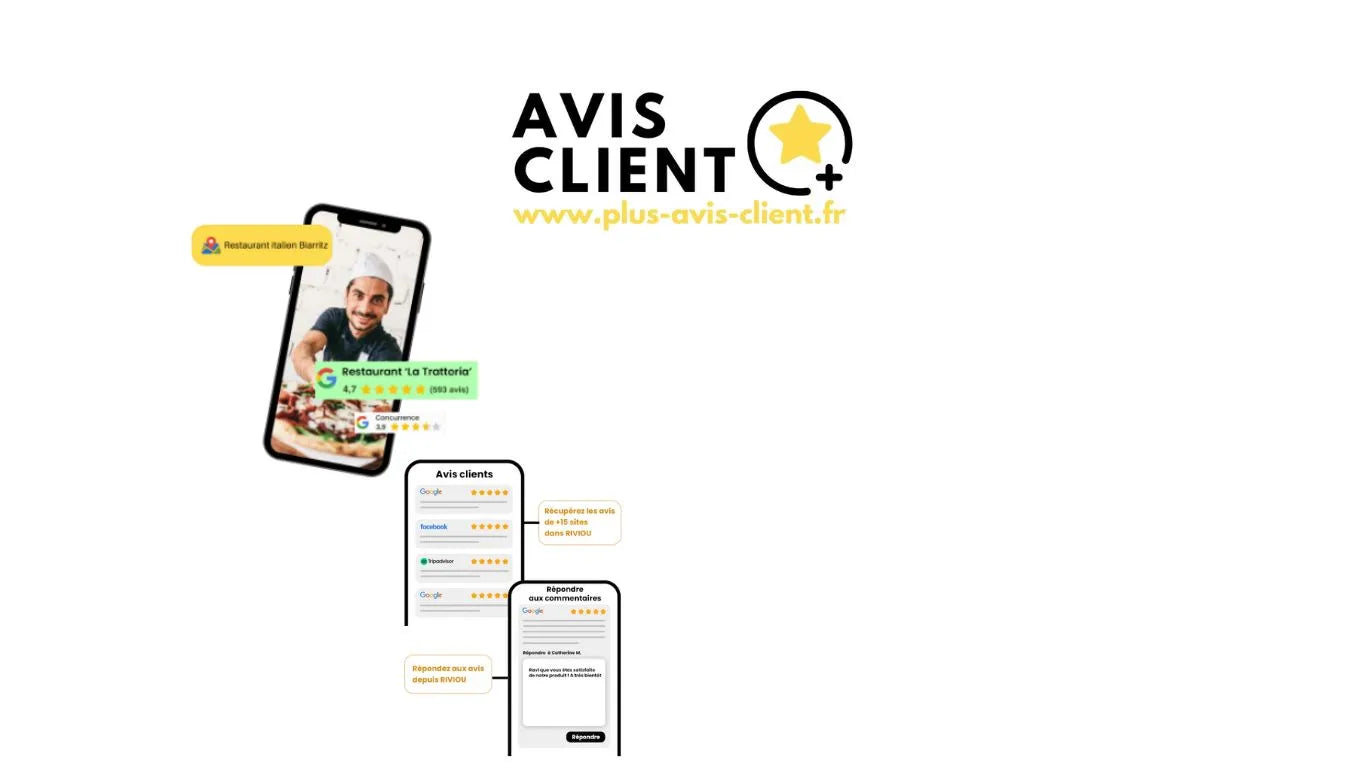
Transforming customer feedback into a driver of sustainable growth
The Crucial Importance of Customer Feedback for Business Growth
Customer feedback plays a crucial role in the growth and sustainability of businesses. It's a valuable source for understanding consumer expectations and adjusting strategies accordingly. By proactively collecting feedback , such as through regular surveys or direct interactions, businesses can leverage customer insights and improve their products and services.

Why collecting customer feedback is essential
Customer feedback is essential for measuring consumer satisfaction and preventing the risk of churn. Understanding the customer experience helps identify areas for improvement and strengthen the offering. A thorough understanding of expectations also allows for adapting products and anticipating future needs .
Having systems in place to collect this feedback is essential. Proactive collection methods provide valuable data, while monitoring platforms where customers express their opinions spontaneously can be equally crucial. Centralizing this information makes it easier to analyze and leverage.
Centralizing feedback makes it easier to identify important trends. It also ensures that every team has access to the same essential data to inform their decisions. This process contributes to continuous improvement and better adaptation to real customer expectations.
Customer feedback and product performance
Leveraging customer feedback allows businesses to improve their products and services. By taking user suggestions into account, they increase customer satisfaction and strengthen customer loyalty.
Surveys, offered at the time of product use, allow for the collection of specific feedback. These authentic interactions provide a clear view of the elements customers value most. By responding quickly to this feedback, companies optimize the user experience.
A structured feedback framework becomes a true strategic asset. It clarifies expectations for both customers and employees, while strengthening transparency and mutual trust.
From collection to loyalty
Barely 31% of consumers take the initiative to share their opinions. Therefore, it's essential to deploy a diversified feedback collection strategy to reach a wider audience. Positive feedback reflects the quality of the offering, while negative feedback highlights concrete areas for improvement.
Actively engaging with customer feedback, whether positive or negative, directly impacts a company's image. Proactive communication ensures a positive reputation is maintained, especially online.
Continuously monitoring customer feedback fosters constant innovation. This allows companies to adjust their strategies and evolve with changing market expectations.
Using customer feedback to improve satisfaction and build loyalty
Customer feedback is a key tool for assessing customer satisfaction and strengthening long-term loyalty. By centralizing this information, a company can not only improve its products but also adjust its marketing strategies to precisely meet consumer expectations.
Centralization of feedback to maximize its impact
Gathering all customer feedback into a single system provides better organization for analyzing and processing it. This ensures that all teams—from product design to customer service—have the same information to optimize their actions.
Such a structure makes it easier to identify trends and priorities for improvement. By focusing efforts on critical areas, this method maximizes the positive effect of feedback on customer satisfaction .
Customers, on the other hand, feel valued when they see that their comments are taken into account, which increases their engagement and loyalty .
From feedback analysis to product improvement
Customer feedback provides essential insights into product performance. It helps identify the most popular aspects as well as those requiring adjustments to deliver an experience that fully meets user expectations.
A thorough analysis allows you to prioritize future developments based on concrete data . This avoids investing in irrelevant features.
Working in a continuous dynamic of listening and responding to customer feedback values their contributions, thus strengthening their trust in the brand .
Create a lasting bond with your customers
Responding proactively to customer feedback demonstrates your commitment to providing an optimal experience. Every interaction represents an opportunity to turn a satisfied customer into an ambassador for your brand .
Positive reviews can be a powerful marketing tool. They increase your credibility and attract new customers through word of mouth .
Integrating customer feedback into your development process builds trust. By showing them that they play an active role in the evolution of your products, you strengthen their attachment to your brand .
The information collected from customer feedback feeds a continuous improvement loop where listening and action combine for constant growth.
Turning negative reviews into opportunities to strengthen your reputation
Negative reviews , while sometimes dreaded, can be real opportunities to improve a company's reputation. When handled correctly, a challenge can be transformed into an opportunity to build customer trust while solidifying a positive online reputation .
Understanding the Value of Negative Reviews
Every negative review is a unique opportunity to demonstrate our attentive listening skills and responsiveness. Rather than viewing them as destructive criticism, this feedback can highlight critical issues that need to be addressed.
By showing customers that their concerns are taken seriously, we build a relationship based on transparency. This fosters trust and encourages their loyalty to our brand.
This process of transforming criticism also encourages a collective approach to improving services, thus strengthening the company's image.
Effective Strategies for Managing Negative Feedback
Adopting a policy of personalized and thoughtful responses to negative reviews can effectively change the perception of a dissatisfied customer. Such a proactive approach demonstrates our professionalism and our ability to combine concrete solutions with clear and open communication.
Using specific criticism to make tangible improvements also demonstrates to other customers and prospects our sincere commitment to progress. A negative review, if handled well, can even turn into a positive recommendation for your business.
Regularly analyzing this feedback helps identify recurring problems, thus opening the door to long-term strategic adjustments.
Creating a virtuous circle through negative reviews
Managing critical feedback shouldn't just be about maintaining a good reputation; it also offers an opportunity to enhance our products or services. By integrating this feedback into a cycle of continuous improvement, we transform initially negative experiences into positive contributions to our brand's success.
Customers who feel valued through this approach develop increased loyalty to the brand, sometimes to the point of becoming its ambassadors, despite an initial unfavorable impression.
Optimizing our processes by taking critical feedback into account reflects our commitment to true active listening . This positioning strengthens our credibility and increases our attractiveness to future customers.
Every interaction with a review, however negative, becomes a lever for growth, consolidating a stronger and more constructive relationship with our customers.
Integrating customer feedback into an effective product strategy
Integrating customer feedback into a product strategy is essential for aligning offerings with real consumer expectations. By relying on in-depth analysis of the collected data, this approach allows for the development of relevant and targeted improvements.
Adopt a strategy focused on customer needs
Customer feedback provides valuable insight into the effectiveness of current products. Identifying and prioritizing these needs is crucial for creating tailored and truly useful features.
- Optimization: Update features to maximize user satisfaction.
- Removal: remove unnecessary or little-used items.
- Innovation: integrating new and bold solutions.
- Evaluation: accurately measure the impact of the improvements implemented.
This prioritization of customer expectations results in products that are better aligned with the market. Continuous improvement cycles help strengthen the product's long-term appeal.
Companies that adapt their product strategy based on constant feedback gain a significant advantage over their competitors.
Combining quantitative and qualitative data analysis
The success of a product strategy depends on the combination of quantitative and qualitative data. This mixed approach allows us to better understand and contextualize the needs expressed by customers.
By rigorously collecting and analyzing this feedback, companies have a solid basis for effectively guiding their future product developments and allocating their investments wisely.
Implementing a structured method for analyzing this data enhances the effectiveness of strategic decisions. This allows companies to be more agile and proactive in the face of market changes.
Anticipate future customer needs
Analyzing customer feedback not only addresses immediate needs, but also anticipates future expectations. This dual approach ensures constant alignment with ever-changing consumer preferences.
Insights from customer interactions help identify emerging trends and adjust the product roadmap accordingly.
By adopting this proactive approach, companies demonstrate their responsiveness and ability to innovate. This anticipatory stance is essential for maintaining a relationship of trust and innovation with their customers.
Multiple channels to effectively collect customer feedback
Diverse feedback channels offer businesses the advantage of personalizing their customer feedback collection strategy based on consumer communication preferences. This promotes seamless and personalized interactions, thereby strengthening customer engagement.

Multi-channel collection techniques
Using different feedback channels allows for the collection of rich and diverse customer impressions, adapting to each context and specific user preferences.
- Instant technologies: using SMS to receive real-time responses.
- Mobile accessibility: QR codes designed for quick and convenient returns.
- Touch innovations: NFC services facilitating simple and instant interactions.
By deploying such a variety of solutions, companies allow their customers to freely choose when and how to share their experience.
This flexibility and responsiveness to consumer needs ensures maximum response rates and more reliable customer data.
Maximizing the effectiveness of omnichannel interactions
Businesses must adopt an omnichannel approach, in line with the increasing complexity of modern customer journeys. This strategy promotes perfect cohesion between different touchpoints.
By ensuring that every interaction contributes to a seamless and satisfying experience, customer relationships are strengthened.
In-depth analysis of each channel's performance provides personalized insights , allowing for continuous adjustment of communication strategies.
By intelligently leveraging available technologies, every customer feedback becomes an opportunity for continuous improvement, thus reinforcing the positive image of the brand.
Towards sustainable growth thanks to customer feedback
Optimizing the use of customer feedback is an essential strategic lever for promoting sustainable growth , marked by continuous improvement of products and services. Each opinion taken into account becomes a cornerstone of a forward-looking building.
Strengthening customer value through continuous improvement
The key to an effective strategy lies in making the most of feedback, ensuring that every piece of data collected contributes to creating increased value for the customer.
By integrating these insights , companies ensure continuous improvement of their offerings, adapting their solutions to the needs and preferences of consumers.
This virtuous process not only generates increased customer satisfaction, but also strengthens the company's reputation and ensures a unique positioning in the market.
- Valuation: Recognizing the customer's contribution to product development.
- Optimization: Adjust strategies to align supply with expectations.
- Loyalty: Transforming satisfied customers into passionate ambassadors.
By regularly sharing product developments based on their feedback with customers, companies value their commitment and strengthen their sense of belonging.
Loyalty and sustainable growth hand in hand
When every customer feedback receives a tailored response, loyalty dynamics are significantly strengthened. This approach helps prevent potential dissatisfaction while building a strong relationship of trust.
Continually adapting products to the needs expressed by consumers not only strengthens the brand-consumer relationship, but also creates added value that promotes sustainable growth .
By developing an agile roadmap based on this feedback, companies lay the foundation for resilient competitiveness, even in a constantly changing environment.

